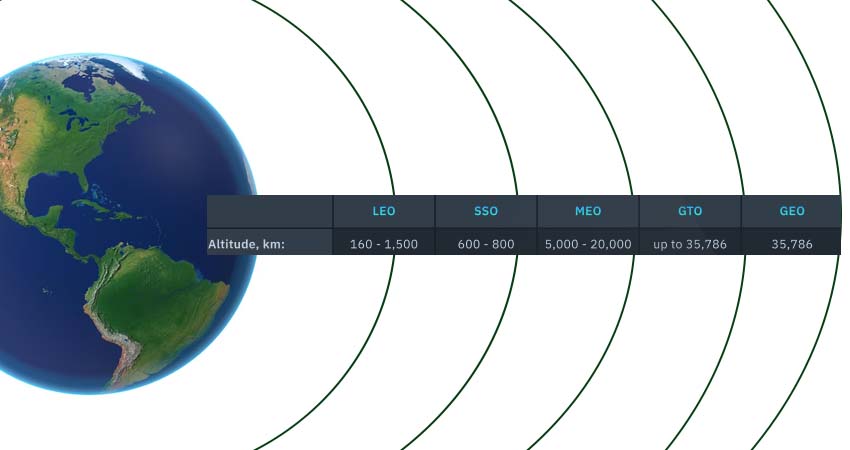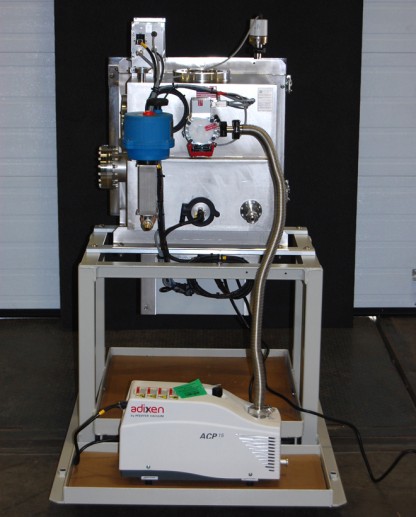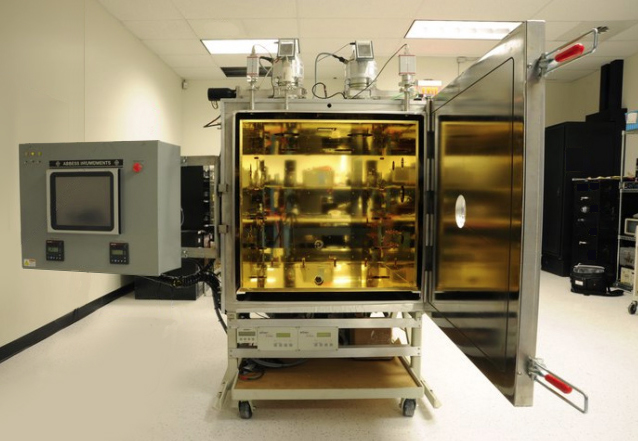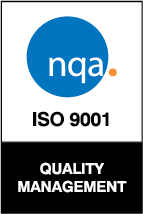Systems designed and engineered to simulate space environments.
Abbess Space Simulation Chambers and Systems provide an integrated solution for recreating space conditions. During Prototyping, Flight Qualification, and Flight Verification phases, Space Simulation Systems are vital, and Abbess Instruments has an extensive portfolio of Space Simulation Test systems capable of simulating a variety of deep space vacuums with or without thermal control for use during these phases.
Before launch, instrumentation and systems must be exposed to space-like temperatures and vacuum levels, and be shown not only to survive the extreme ranges but also to operate within parameters. To prove reliable in these multivariable environments, it is required that the article under test are exposed to conditions ranging from launch through altitude increase, then into deep space followed by re-entry into a specified atmosphere. Space simulation chambers are critical to these tests, and Abbess Instruments is one of the few companies in the world with the capability and experience to manufacture these fully functional and integrated systems.

- low Earth orbit (LEO)
- Sun-synchronous orbit (SSO)
- medium Earth orbit (MEO)
- geostationary transfer orbit (GTO)
- geostationary orbit (GEO)
Please refer to our Altitude & Atmosphere Test Systems page for required testing pressures from 760 torr to 0.1 Torr (altitudes of up to 200,000 ft)!
If there is a thermal component in your test visit out Thermal vacuum System page!
To get an accurate quote for the system you need fill out our RFQ or call today!
Basic System | Complex System | Upgrade Options
View our Space Simulation Products
Basic System
A basic Space Simulation Test System consists of the following:
- Vacuum Chamber
- A front or top-loading Aluminum or SS cube with metal door
- Digital pressure gauge
- Roughing Pump w/ accompanying deep vacuum pump
- Thermal Plate to simulate temperatures often experienced in space environments



Actual chamber material choices are dependent on the desired operational vacuum, as outlined in the table below. Do you require manual or automatic operation? Abbess will work with you to customize automation to your process, just as we will work with you to ensure the system configuration meets your operational needs: While the most basic system can be controlled manually (by starting/stopping the pump(s) and opening/closing valves), a Vacuum Cycle Controller (VCC) can be added to automate the process.
There are many Upgrade Options available that will add complexity and functionality. These options, can be found in the upgradable options section down below.
| Material* | Useful Pressure Range (Torr) | Use | Comments |
| Untreated Al with Al or Acrylic door | 760 to 10-4 inc. | altitude testing | More powerful pumps will be needed with an Acrylic door than if a metal door was used. Acrylic door must be kept below 135C. |
| Acid-etched Al chamber & door | 760 to 10-5 inc. | space simulation | |
| Untreated SS chamber & door | 760 to 10-6 inc. | ||
| Electropolished SS chamber & door | 10-6 and better | ||
| Bakeout & Electropolished SS chamber & door | 10-7 and better | Bakeout required to outgas chamber |
To get an accurate quote for the system you need fill out our RFQ or call today!
Complex System
A complex Space Simulation Vacuum chamber consists of several major subsystems: the main chamber; the pumping system; the thermal shroud; and the control system:


To get an accurate quote for the system you need fill out our RFQ or call today!
Chambers can be as large as the ones shown above (in the order of 48” x 48” x 48” or larger) and, for vacuums less than 10-5 Torr, are made from electropolished Stainless Steel. Difficult to machine and weld, the chambers are routinely made so that the walls deflect less than an impressive 1/1000” while under vacuum. Thick walls and strategically placed external ribs are needed to do this.
Space Simulation pumping systems are amongst the most complex, often requiring two Turbo pumps in order to bring the expansive chamber down to the required vacuum level … and in a timely fashion. Such pumps attach directly to the chamber and pump through large ports, of around 10” diameter, at speeds of hundreds of cubic feet a minute. A complex pump down is illustrated in Fig 5.
The thermal shroud is a sub-chamber within the chamber finished perhaps in gold (as shown above) to reflect as much heat as possible back to the Unit Under Test; or dense black to absorb as much heat and light as possible. Shrouds are typically heated/cooled sub-systems covering the large range of -80C to +195C, with liquid N2 being the common choice for cooling.

Monitoring and control of systems are attuned to the customer’s specified process needs which, for Space Simulation Systems, usually requires a PC Touch Screen package (the panel is shown to the left of Figs. 2 & 3, and its GUI in Fig. 4) – a necessity when thermal profiling is required. An example of thermal profiling is given in Fig. 6. Manual and automatic valve operation and pump control are configured to both optimize operation time and assure the proper cycling of vacuum equipment. Abbess and system operators can connect remotely to these PC control systems which, in turn, can be programmed to acquire and log data, and to message operator mobile devices.
A sample Complex System Performance Summary is provided in Table 2.Testing is performed on empty, clean chambers at the Abbess Facility in Holliston (188’ elevation).
| Complex Space Simulation System Performance 48” Cube | ||
| Operational Vacuum | 10-6 Torr | For an empty, clean chamber at sea level … over all Temp ranges |
| Vacuum Ramps | Pump Down Ramp: 10-5 Torr in ~3 hrs | For an empty, clean chamber at sea level |
| Vacuum Relief Ramp: < 3 mins | ||
| Deep Space Vacuum Stability | Within 1×10-9 Torr over several minutes
Within 0.2×10-7 over 12h 49m | Measured at 10-7 Torr |
| Thermal Range | -150 °C to +150 °C | Of thermal plates |
| Thermal Ramps | Fast Ramp: | Over the range -60 °C to +100 °C heating and cooling |
| 3 °C/min | Using 22psi LN2 tanks | |
| 6 °C/min | Using 235 psi LN2 tanks | |
| Slow Ramp: 1 °C/min | ||
Space Simulation Test Systems are readily configured to provide product visibility: Visually observe your test item (illuminated by optional switchable, in-chamber lighting) through optional viewports, as illustrated in Figs 2 & 3. Use the same, or other viewports, to optically illuminate/test your in vacuum items at your desired wavelengths. Close optional shutters for subsequent light-tight storage or functional testing.
Where there is limited counter space or large batch sizes, the entire system can be integrated on a cart using identical or mixed-sized, chambers. Since cart mounted systems are shipped turn-key, set-up is minimal. Cart-mounting provides full system mobility and thus flexibility of positioning on your production floor. Mixed-sized inventory? Add optional removable shelving.
To get an accurate quote for the system you need fill out our RFQ or call today!
Upgrade Options
Upgrade options include:
- Vacuum Pump with Inlet and Exhaust Filters- Optional power and automatic control can be integrated into a Vacuum Cycle Controller (VCC).
- A Vacuum Cycle Controller (VCC) that can be used to automate some or all of the control functions via panel-mounted buttons and indicators (Fig 2). It will permit a single ‘automatic’ altitude/vacuum set point.
- A VCC controlled by a PC with a user-specified Graphical User Interface (GUI) operated through a touch-screen (as illustrated in Figs 3 & 4 and in Data-Logged High Vacuum Storage System). This permits: automatic monitoring, data-logging, and vacuum environment display; remote access; and optionally message-sending to operator’s mobile device.
- Altitude profile simulation functionality (e.g. ‘Climb & Dive’) can be built in to the PC Touch Screen VCC upgrade option. Such functionality is valid only for altitudes of up to 100,000 ft / 19miles / 30km (pressures 10-4). See Altitude Test
- Systems for more details on ‘Climb & Dive’.
- Process Control Enclosure – Contains components necessary for controlling the system as well as logic and interfaces for the
- Vacuum Cycle Controller.
- Process Timer Control
- Status Indicators – Provide visual indication of system status.
- Vacuum Cycle Controller – Control ON/OFF buttons, main power switch.
- Control Valves are required with a VCC:
- Automatic Vent Valve – Automatic solenoid valve vents air or inert gas purge into chamber based on control input from Vacuum Cycle Controller.
- Proportional Valve – controls pumping to a certain rate for altitude profile simulation.
- Digital Pressure Gauge & Controller are required with a VCC
- Provides pressure display and set point valve control per integral Pressure Transducer data. Also provides pressure set-point relays that can be used for various system control functions.
- Mobile cart; or heavy duty in-built casters for the largest systems.
- Heating and/or cooling thermal plates/shelving and control:
for heating up to 150C, or 300C) (as illustrated in the Vacuum Oven System).
and/or for cooling to -150C. - Shelving (passive).
- Inert gas purge.
- Circulation fans.
- Mechanical feedthroughs such as shafts with or without rotation.
- Electrical feedthroughs for power and signals.
- Optical ports for optimal transmission of test equipment wavelengths
- Special coatings such as gold (e.g. for thermal shroud as in Fig. 2).
- Switchable, internal lighting
- Viewports / optical test ports (see Figs 2 & 3)
Abbess can help you. Successfully test your high-value inventory in our manual or automatic Space Simulation Systems.
To get an accurate quote for the system you need fill out our RFQ or call today!
Featured Products:
Space Simulation Systems and Chambers
Temperature range (cold)-320F/-196C to (Hot)+300F/150C and from controlled atmosphere to 10-9 torr
Satellite Testing Vacuum System
Satellite Testing Vacuum Systems engineered and built for the satellite industry. These systems can be customized for your desired test procedure. The inner Thermal Shroud can be coated with AeroGlaze® to further improve your testing environment.
Thermal Vacuum Solar Simulation System
Abbess Thermal Vacuum and Solar Simulation Chamber Systems are designed and produced for use in laboratory production and testing applications requiring an exposure to or process within a controlled vacuum environment at specific temperature involving solar simulation.
Multi-Plate Thermal Vacuum Chambers
Multi-plate thermal vacuum systems are built to customer specifications, testing requirements, and budget.
This custom high vacuum chamber with thermal inserts is capable of being used as a large-scale space simulation/thermal vacuum chamber.
Automated Space Simulation System with -80C Cascade Refrigeration
This system allows articles under test placed inside to be exposed to high vacuum pressure as well as various temperatures via the heated and cooled Thermal Plate Assembly. A Thermal Vacuum Cycle Controller (TVCC) is used to automate and control functions.
High Vacuum System with Thermal Shroud
This 48 inch cube system (thermal vacuum chamber) allows items placed inside to be exposed to vacuum down to 10^-7 Torr. A Vacuum Cycle Controller (VCC) is used to automate control functions.
High Vacuum – Thermal Vacuum System
The Abbess Thermal Vacuum Chamber System shown allows Article(s) Under Test placed inside to be exposed to high vacuum (10e-8 range) as well as heated and cooled via conductive contact with the Gold Plated Copper Thermal Plate.
Multimode Cooling, Thermal Vacuum Chamber System
The Abbess Multimode Thermal Vacuum Chamber System serves as the flexible platform for a range of thermal vacuum testing and experimentation methods. Multimode is cooling using 2 different methods.
Replicate atmospheric conditions within the vacuum chamber system. This vacuum chamber sytem is ideal for space simulation testing. 6 heated and cooled thermal plates.
To get an accurate quote for the system you need fill out our RFQ or call today!












